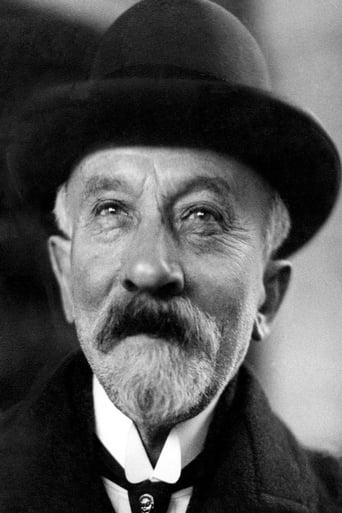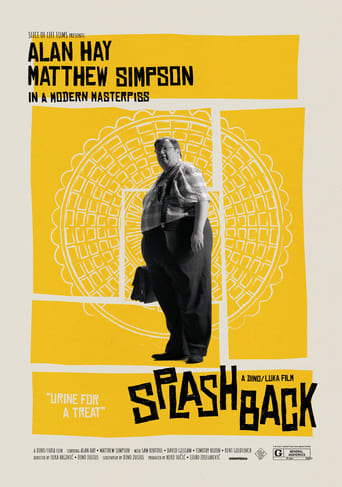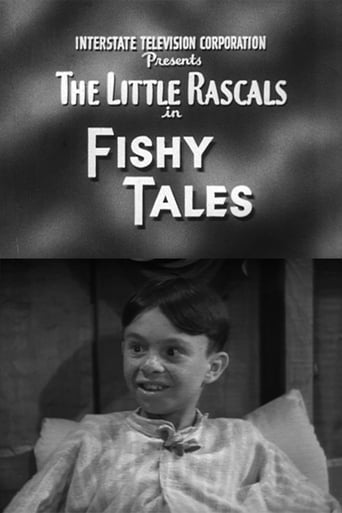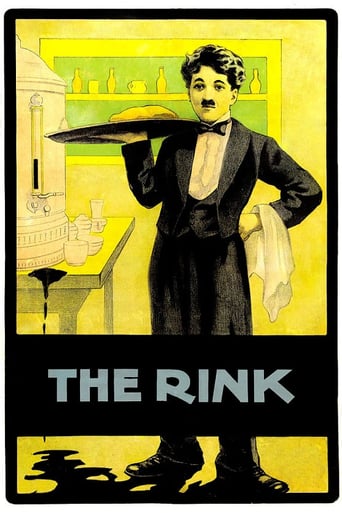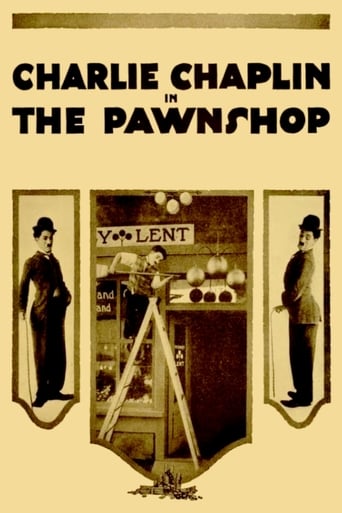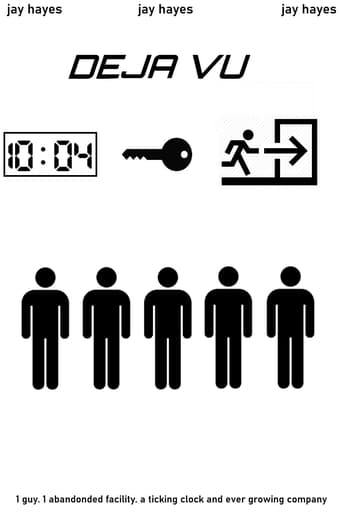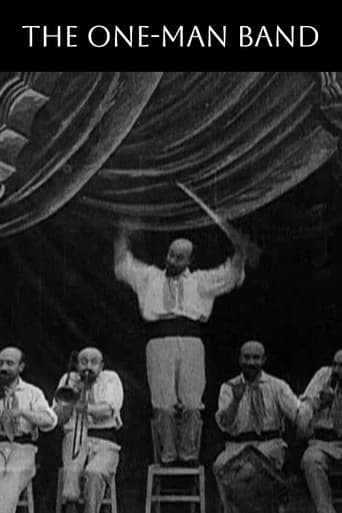
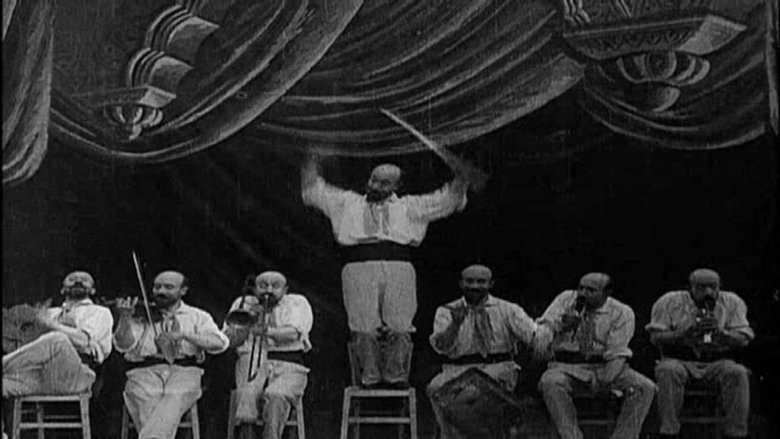
The One-Man Band (1900)
A band-leader has arranged seven chairs for the members of his band. When he sits down in the first chair, a cymbal player appears in the same chair, then rises and sits in the next chair. As the cymbal player sits down, a drummer appears in the second chair, and then likewise moves on to the third chair. In this way, an entire band is soon formed, and is then ready to perform.
Watch Trailer
Cast


Similar titles
Reviews
Good story, Not enough for a whole film
It’s not bad or unwatchable but despite the amplitude of the spectacle, the end result is underwhelming.
The movie's not perfect, but it sticks the landing of its message. It was engaging - thrilling at times - and I personally thought it was a great time.
Actress is magnificent and exudes a hypnotic screen presence in this affecting drama.
There are seven chairs lined up on stage. A man (Melies) fills on, and then reproduces himself and fills the next, and so on. Each of the incarnations has a musical instrument. First they play in a conventional way, but eventually they will merge and become one man again. There is some clever reshuffling on the stage. One of the better ones.
George Melies does it again! In this film, he is presenting an orchestra - - of himself! He sits in a chair and a clone of him with an instrument is there. He repeats this trick a few more times, and they all play a song. After they do that, they all merge back together. Melies takes a bow. This film shows they can take it beyond the limits in very early cinematography. This early flick shows the possibilities that cinema can hold, and if I was watching the premiere of this picture, I would've been astonished. If this movie was newer, I probably would rate it lower, but since it's from 1900, I'll be happy to give this movie an eight out of ten.
One of the visual effects that French "Cinemagician" Georges Méliès pioneered and mastered was the double exposure, in which a piece of film is exposed twice, to two different images. The resulting photographic image shows the second image superimposed over the first. 'L' Homme orchestre' is, for its time, a rather advanced experiment into his effect, and, rather than just two images captured together, Méliès has created seven clones of himself, each posing as the various members of an orchestra. As the first magician/musician eases himself onto the first chair, another semi-transparent double rises from his body to occupy the second chair, and so forth.After the enthusiastic "one-man band" has performed a musical piece, they sequentially dissolve into one another, leaving only the conductor of the orchestra, who hangs around for one final display of magic. As a large fan emerges behind him (apparently to his complete surprise, as Méliès demonstrates one of those classic silent comedy double-takes), the conductor takes a seat on the single remaining chair, which sinks into the floor. Quick as a flash, a semi-transparent Méliès comes hurtling from behind the fan, disappearing on impact with the floor with one of those whiz-bang puffs of smoke that the director so adored. The huge fan lowers again to reveal a smugly-grinning Méliès standing there, safe and well.More than a century after it was produced, 'L' Homme orchestre,' though not popularly known among most people, is notable in its innovative use of a newly-discovered visual effect, and as a brief demonstration of Georges Méliès' boundless creativity and enthusiasm. If you've got a couple of minutes of spare time, why not occupy yourself by watching this enjoyable little film?
Georges Melies was the founder of special effects in movies. Its really quite wonderful watching these little shorts: imagine you had the opportunity to realise for the first time the things that were possible with filmed images. By filming a scene, then removing or moving one element and filming it again and editing the two shots together you can make things disappear or jump from one side of the room to the other. This is true magic, and watching Melies discover these things is a special thing i'm glad i've had the opportunity to see.Aside from this value, the shorts still retain their immense fun for audiences an entire century after their creation. Now THAT is called staying power.In this short, Melies clones himself six times to fill six seats of an orchestra, then makes the seats disappear, then reappear, then makes himself disappear in a cloud of smoke. The music, i believe is Robert Israel, a great modern composer who's been doing us the honour of writing scores for many great silent movies, which adds immeasurably to our enjoyment of them.


